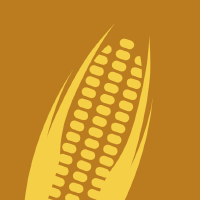Topic Menu
► Topic MenuTopic Editors


New Trends and Innovations in Medicinal and Aromatic Plants, and Specialty Crops
Topic Information
Dear Colleague,
Medicinal and aromatic plants (MAPs), as well as specialty crops, encompass a vast array of plant species that have been the subject of research in numerous areas and experimental approaches. The innovative and sustainable evaluation and exploitation of these crops involve a broad spectrum of botanical, environmental, horticultural, agronomic, genetic, phytochemical, and applicative aspects, necessitating a multifaceted and diversified approach. This Topic Collection aims to highlight the latest trends in research and development within MAPs and specialty crops, providing a comprehensive overview that includes plant evaluation, conservation, cultivation, biological activity, phytochemical analysis, and marketing. Articles submitted should focus on process innovation or product innovation and should clearly emphasize these aspects. Research reports and reviews on MAPs and specialty crops are welcome, with the topics addressed being but not limited to:
- Ecological role, characterization, and description of wild populations, including conservation and domestication concerns;
- Breeding, selection, propagation and nursery studies, including studies on plant growth and development, in vitro culture and micropropagation, genetic selection, genomics, and related topics;
- Cultivation and crop management issues, in fields and in protected growing conditions, soil and soilless systems, conventional and organic approaches, and intensive and extensive farming. This includes all kinds of cropping techniques, such as sowing/transplant, fertilization, irrigation, mulching, and weeds management, as well as harvesting methods.
- Adaptation, coping mechanisms, and responses to biotic and abiotic stresses.
- Phytochemical evaluations, including assessment and analysis of essential oils and other plant extracts, quantification and bioactivity studies.
- Traditional and novel uses of MAPs and specialty crops, both for food and no-food purposes, at the household and industrial levels. This also includes exploring market perspectives and conducting present and future scenario analyses for applications and selling.
- Utilization of byproducts, wastes and residues, and the development and improvement of the related production chains.
Prof. Dr. Silvana Nicola
Dr. Alessandra Carrubba
Topic Editors
Keywords
- crop productivity
- bioactivity
- biodiversity
- botanicals
- herbs
- multifunctionality
- phytochemistry
- plant-based extracts
- secondary metabolites
Participating Journals
| Journal Name | Impact Factor | CiteScore | Launched Year | First Decision (median) | APC | |
|---|---|---|---|---|---|---|

Agriculture
|
3.3 | 4.9 | 2011 | 20.2 Days | CHF 2600 | Submit |

Agronomy
|
3.3 | 6.2 | 2011 | 15.5 Days | CHF 2600 | Submit |

Crops
|
- | - | 2021 | 24.2 Days | CHF 1000 | Submit |

Horticulturae
|
3.1 | 3.5 | 2015 | 14.8 Days | CHF 2200 | Submit |

Plants
|
4.0 | 6.5 | 2012 | 18.2 Days | CHF 2700 | Submit |

MDPI Topics is cooperating with Preprints.org and has built a direct connection between MDPI journals and Preprints.org. Authors are encouraged to enjoy the benefits by posting a preprint at Preprints.org prior to publication:
- Immediately share your ideas ahead of publication and establish your research priority;
- Protect your idea from being stolen with this time-stamped preprint article;
- Enhance the exposure and impact of your research;
- Receive feedback from your peers in advance;
- Have it indexed in Web of Science (Preprint Citation Index), Google Scholar, Crossref, SHARE, PrePubMed, Scilit and Europe PMC.

